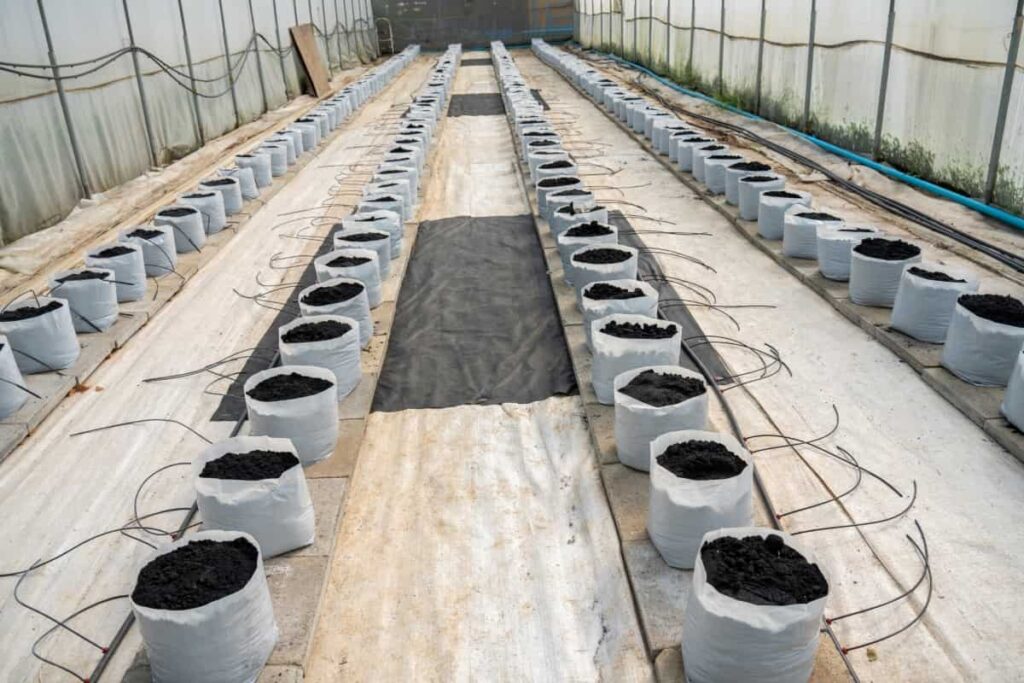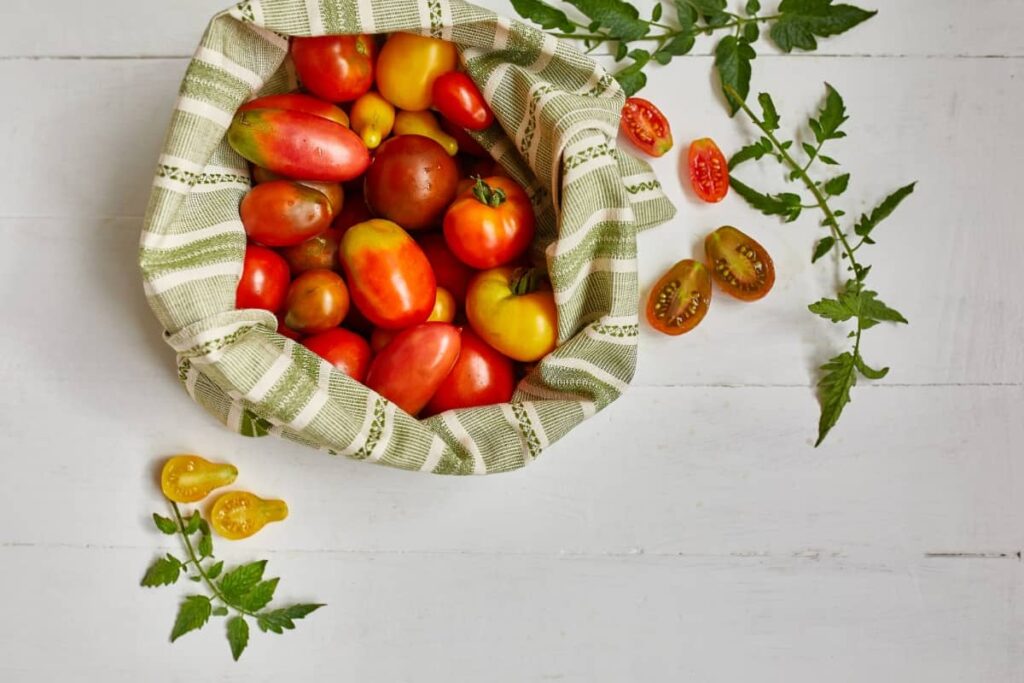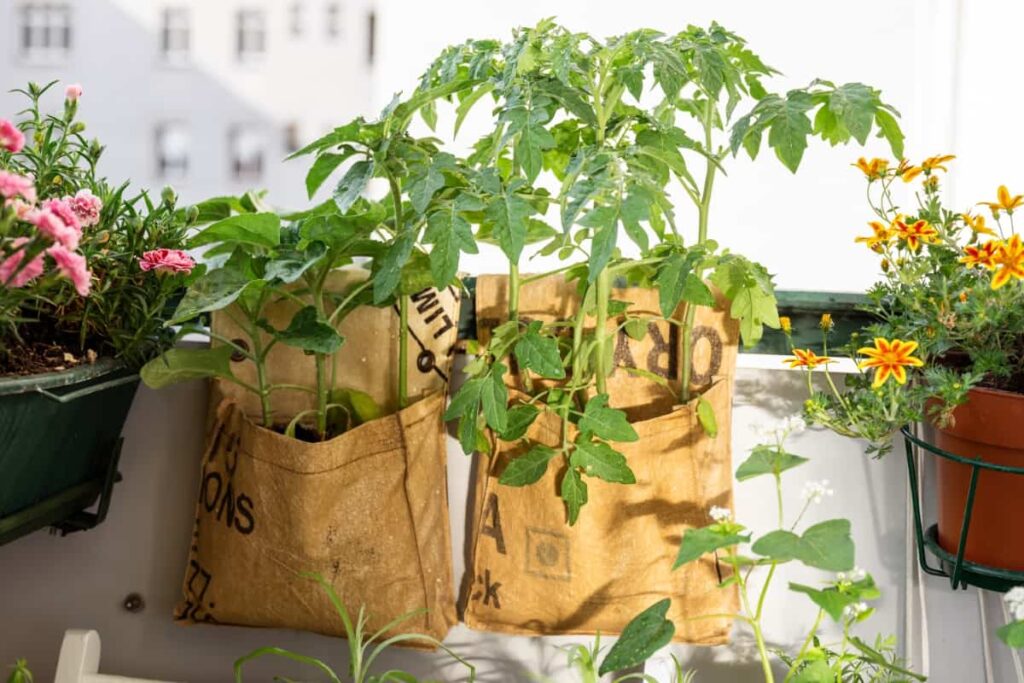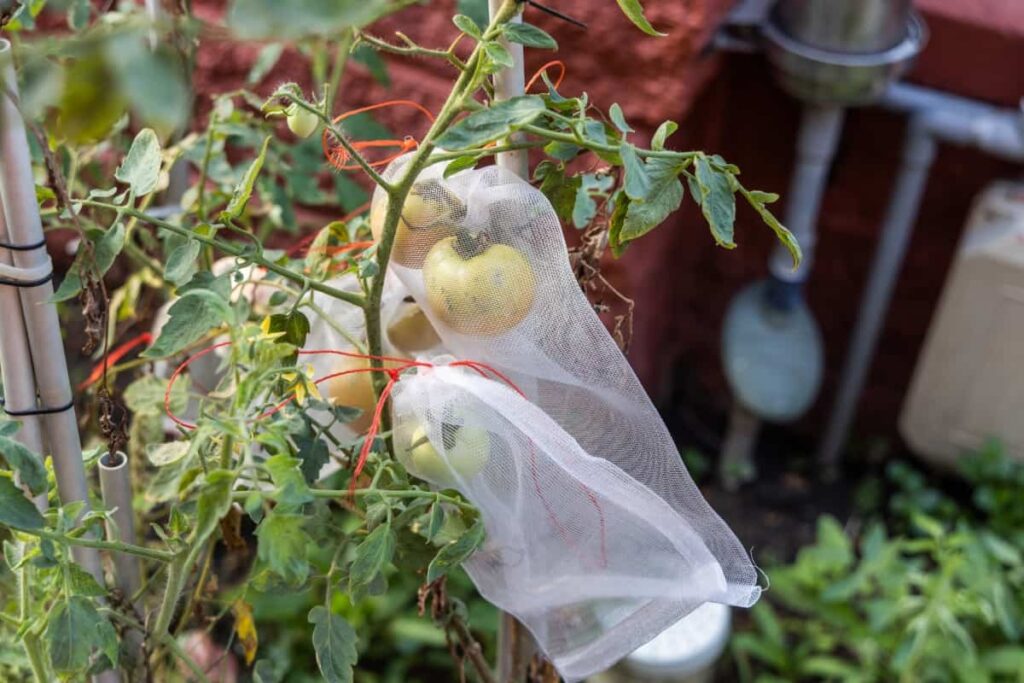Planting tomatoes in grow bags is a convenient and efficient way to grow this popular vegetable, especially if you have limited space. Here’s a step-by-step guide to help you successfully plant tomatoes in grow bags.
Benefits of Using Grow Bags for Tomatoes
- Tomato grow bags provide excellent drainage, preventing waterlogged soil and root rot.
- They are portable, making it easy to move your tomato plants to the sunniest spots in your garden or patio.
- Grow bags are lightweight and easy to store, making them ideal for urban gardening or small spaces.
- They also help to regulate soil temperature, keeping the roots cool in hot weather and warmer in cooler climates.
Selecting the Right Tomato Varieties for Grow Bags
When selecting tomato varieties for grow bags, it’s important to choose compact or determinate varieties that are well-suited for container gardening. Look for varieties labeled as “bush,” “patio,” or “dwarf” tomatoes, as these tend to have smaller, more compact growth habits. Some popular varieties for grow bags include Tiny Tim, Patio Princess, Bush Early Girl, and Tumbling Tom.

Planting Tomatoes in Grow Bags
Choosing the Right Grow Bags
Size, Material, and Drainage Considerations
When selecting grow bags for tomatoes, consider the size, material, and drainage properties. Opt for grow bags that are at least 5 gallons in size to provide ample room for root development. Fabric grow bags made from breathable materials like polyethylene, or polypropylene are ideal as they allow for air circulation and prevent waterlogging for growing tomatoes in grow bags.
Advantages of Fabric Grow Bags for Tomatoes
Fabric grow bags provide excellent aeration to the roots, preventing issues like root rot and promoting healthy root growth. Planting tomatoes in fabric bags also regulates soil temperature. They are also reusable, reducing waste and saving money in the long run. Furthermore, fabric grow bags are eco-friendly and biodegradable, making them a sustainable choice for organic tomato cultivation in grow bags.
Soil Preparation and Composition
Ideal Soil Mix for Tomatoes in Grow Bags
For the best soil for tomatoes in bags, start with high-quality potting soil specifically formulated for container gardening. Add perlite to it to improve drainage and aeration. Incorporate compost or aged manure to provide essential nutrients and promote healthy soil structure. Additionally, while preparing soil for tomatoes in grow bags, adding a balanced fertilizer with a higher phosphorus content can encourage robust root development and fruit production.
Adjusting pH and Nutrient Levels for Optimal Growth
Tomatoes prefer a pH range between 6.0 and 6.8. Test the pH of the soil mix using a pH meter or soil test kit, and adjust as needed with amendments such as lime to raise or sulfur to lower it. Maintaining the correct pH level is essential for nutrient availability and uptake by tomato plants.
Planting Tomato Seedlings or Seeds
Timing and Preparation for Planting Tomatoes in Grow Bags
Start by selecting healthy seedlings or starting tomato seeds in grow bags indoors 6-8 weeks before the last expected frost date. Prepare grow bags with well-draining soil mix and ensure adequate drainage. Transplant seedlings into bags once the risk of frost has passed and also the soil temperatures are above 15°C. Protect seedlings from strong winds and provide support for indeterminate varieties.
Proper Planting Depth and Spacing
When transplanting tomatoes into grow bags, bury seedlings deep, up to the first set of true leaves, promoting strong root development. Space determinate varieties 12-18 inches apart and indeterminate ones 24-36 inches apart to accommodate their growth. For seeds, follow the recommended spacing on the packet, usually 18-24 inches apart. Ensure adequate airflow between plants to prevent disease.
In case you missed it: 10 Best Tomato Seed Packets to Buy in India: Plating Instructions Included

Watering and Moisture Management
Establishing a Watering Routine for Tomato Plants
Establish a regular watering tomatoes in grow bags, aiming to keep the soil moist consistently but not soggy. Water deeply at the base of the plants, avoiding wetting the foliage to avoid fungal diseases. Adjust the watering frequency with respect to weather conditions, increasing during hot, dry periods and reducing during cooler, rainy spells.
Tips for Consistent Moisture and Avoiding Water Stress
Consider using a drip irrigation or soaker hoses to deliver water to the root zone. Mulch the surface of the soil with organic materials like straw or wood chips to help retain moisture and suppress weed growth. Monitor soil moisture regularly by inserting your finger into the soil to a depth of 1-2 inches. If the soil is dry at this depth, it’s time to water.
Fertilization and Nutrient Management
Choosing the Right Fertilizers for Tomatoes
Choose a balanced fertilizing tomatoes in grow bags with a higher phosphorus content such as a 10-10-10 or 5-10-5 formulation. Phosphorus encourages strong root development and flower formation, leading to a better fruit set. Additionally, consider using organic fertilizers like compost, aged manure, or fish emulsion. Avoid high-nitrogen fertilizers, as they can promote excessive foliage growth instead of fruit production.
Fertilization Schedule for Healthy Growth and Fruit Production
Start by incorporating a balanced fertilizer into the soil mix at the time of planting or transplanting. As the plants grow, side dress or top dress with additional fertilizer every 4-6 weeks throughout the growing season. Monitor plant health and adjust fertilization rates based on leaf color, growth rate, and fruit production. Additionally, consider conducting soil tests periodically to assess nutrient levels and make any necessary adjustments for maximizing tomato yield in grow bags.
Sunlight and Temperature Requirements
Ensuring Adequate Sunlight for Tomato Plants
To meet sunlight requirements for tomato bags, choose a sunny location for your grow bags that receives at least 6 hours of sunlight per day. If growing tomatoes indoors or in a greenhouse, provide supplemental lighting with grow lights to ensure adequate light intensity for photosynthesis. Rotate the grow bags periodically to ensure even sunlight exposure on all sides of the plants.
Managing Temperature for Optimal Tomatoes
The ideal temperature for growing tomatoes in bags ranges from 21-29°C during the day and 15°C to 21°C at night. Protect tomato plants from extreme heat by providing shade during the hottest part of the day or using shade cloth to diffuse sunlight. In cooler climates, consider using season extenders like row covers or cloches to protect plants from cold temperatures and frost.
Tomato Pruning and Training in Grow Bags
Techniques for Pruning Tomato Plants in Grow Bags
Start by removing the suckers that develop in the crotches between the main stem and other branches. These suckers typically divert energy away from fruit production and lead to overcrowding. Use clean, sharp pruners to make clean cuts and minimize damage to the plant. Additionally, remove any yellowing or diseased leaves to prevent the spread of pathogens.
Tomato Trellising and Support in Grow Bags
Install sturdy support systems such as tomato cages, stakes, or trellises to maintain the plants upright and contained within the grow bags. For determinate varieties, a single sturdy stake or cage may be sufficient to support the plants. Indeterminate varieties may require taller stakes or trellises to support their sprawling growth habit. Secure the support system firmly in the soil to prevent tipping or leaning as the plants mature.
In case you missed it: 10 Best Fertilizers to Increase Tomato Fruit Size, Yield, and Taste

Pest and Disease Management
Common Tomato Pests and Diseases
Common pests include aphids, whiteflies, tomato hornworms, and spider mites, that feed on plant sap and can transmit diseases. Diseases such as blight, wilt, and leaf spot can also infect tomato plants, causing wilting, yellowing foliage, and fruit rot. It’s essential to monitor plants regularly for signs of pest infestation or disease signs and take prompt action to prevent further damage.
Preventative Measures and Organic Control Methods
Practice good cultural practices proper spacing, and sanitation. Remove and dispose of diseased plant materials to prevent the spread of pathogens. For pest control for tomato plants in grow bags, introduce beneficial insects such as ladybugs or lacewings to help control pest populations naturally. Additionally, use organic pesticides and fungicides as needed, such as neem oil, insecticidal soap, or copper fungicides for disease management for tomato grow bags.
Harvesting and Post-Harvest Care
Indicators of Tomato Ripeness and Harvesting Techniques
Depending on the variety, ripe tomatoes may be red, orange, yellow, or even striped. Test the firmness of the tomato by gently squeezing it – it should yield slightly under pressure without being too soft. Another indicator is the ease of detachment from the vine – ripe tomatoes should come off easily with a gentle twist. For harvesting tomatoes from grow bags, use sharp scissors or pruning shears to harvest tomatoes, cutting the stem just above the fruit to prevent damaging the plant.
In case you missed it: The Art of Heirloom Tomato Farming: Growing Rare and Delicious Varieties

Conclusion
Growing tomatoes in grow bags offers numerous benefits, such as portability, better drainage, and healthier root systems. With careful attention to detail and regular care, growing tomatoes in grow bags is a rewarding and fruitful experience for any gardener.
- Profitable Village Farming Business Ideas in 2024
- High-Yield Aquaculture: Fast-Growing Fish for Farming
- Effective Fish Pond Construction Techniques for Beginners
- Irrigation and Water Management in Pineapple Farming
- Blossom to Harvest: Mastering Flowering and Pollination in Papaya Farming
- Pig Fattening Essentials: From Selection to Sale for Beginners
- Raising Wagyu Cattle: A Complete Guide for Premium Beef Production
- Soil Types and Their Water Holding Capacity
- Optimizing Irrigation Schedules for Coconut Groves for Enhanced Yield
